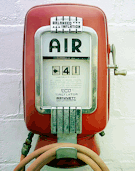Drive mode indicators While finishing our Lincoln dashboard symbols page update, we find ourselves yet again adding to already swollen drive mode pages with three brand new symbols. The two pages now hold over 90 symbols between them. And of course, there already existed symbols that could have been used! Here is a Deep Snow …
Author's posts
Permanent link to this article: https://dashboardsymbols.com/2024/11/new-drive-mode-indicators-swell-two-drive-mode-pages/
Black and white and gray scale indicators gets its page
Gray scale indicators Some time ago, we made a table to account for the growing number of black and white and gray scale indicators. However, we neglected to create a page for them. That oversight has now been corrected. Symbols seen in black and white and gray scale are principally the result of advanced driver …
Permanent link to this article: https://dashboardsymbols.com/2024/11/black-and-white-and-gray-scale-indicators-gets-its-page/
We were wrong — somewhat — on the Lincoln owner’s manual fail
Lincoln owner’s manual fail So we reported a few days ago that we had run into another owner’s manual fail, this time from Lincoln. In this case we stated that the company had left out a list of indicators found on the Corsair instrument panel completely. We were wrong. We found the list backed up …
Permanent link to this article: https://dashboardsymbols.com/2024/11/we-were-wrong-somewhat-on-the-lincoln-owners-manual-fail/
A completely unneeded symbol expands the auto headlamps page
Auto headlamps We added a new symbol to our auto headlamps page, courtesy of Lincoln. A completely unnecessary move of the letter A to outside the representation of the lamp! The page now holds 14 very, very similar images, all of which represent a system that turns the high beams on and off by sensing …
Permanent link to this article: https://dashboardsymbols.com/2024/11/a-completely-unneeded-symbol-expands-the-auto-headlamps-page/
A word on tire pressure and tire pressure gauges
Tire pressure So its that time again. Time when the weather cools and your tire pressure drops, as directed by nature, and you’ll soon see the Tire Pressure Monitor System (TPMS) light. The one that looks too much like a horseshoe. And mine did as well. So off I went to the gas station to …
Permanent link to this article: https://dashboardsymbols.com/2024/11/a-word-on-tire-pressure-and-tire-pressure-guages/
BlueCruise system indicators
BlueCruise system These are BlueCruise System Indicator symbols. When active, BlueCruise, a subscription service from Lincoln, uses cameras to monitor the vehicle’s position within a lane and applies steering support to keep the vehicle centered in the lane. Before continuing, is one of these truly your symbol?? If yes, then read on below. Otherwise, you …
Permanent link to this article: https://dashboardsymbols.com/2024/11/bluecruise-system-indicators/
Yet another owner’s manual fail — from Lincoln — and its exactly the same one!
Lincoln owner’s manual fail Indeed, we’ve found another owner’s manual fail. Over the last few months ago we reported on the discovery that Mazda and then Kia had left instrument panel indicators out of the list found in the owner’s manual. Now we find that Lincoln has not only has done the same thing, with …
Permanent link to this article: https://dashboardsymbols.com/2024/11/yet-another-owners-manual-fail-from-lincoln-and-its-exactly-the-same-one/


Marc Favreau
The author has 30+ years of automotive experience and has assembled the most extensive collection of symbols and warning lights anywhere (over 1,000!) and can help you open and start any keyless start car with a dead key fob battery. BA, St. Joseph's, ME: MS, RPI, NY
Most commented posts